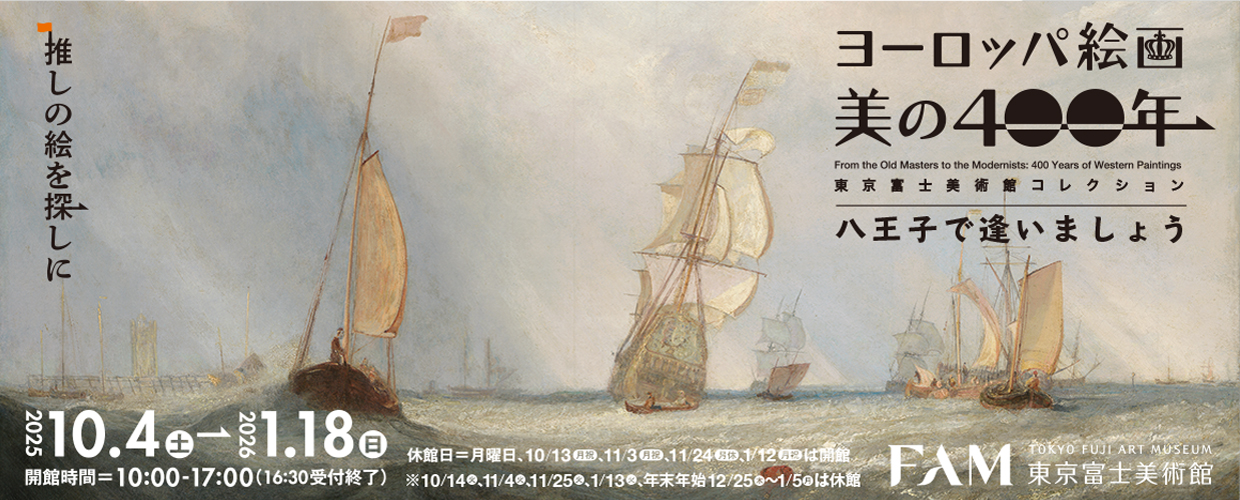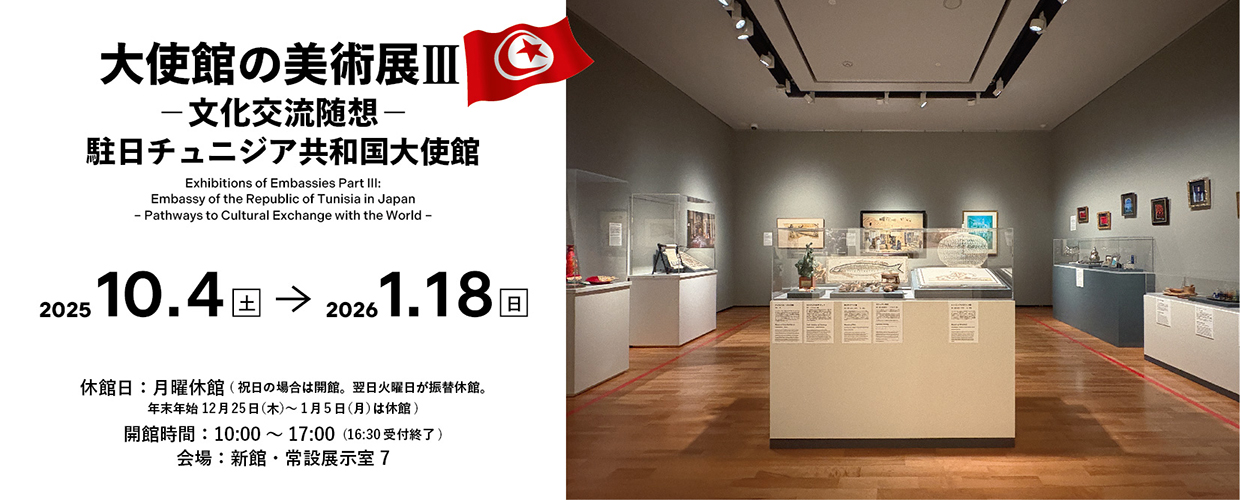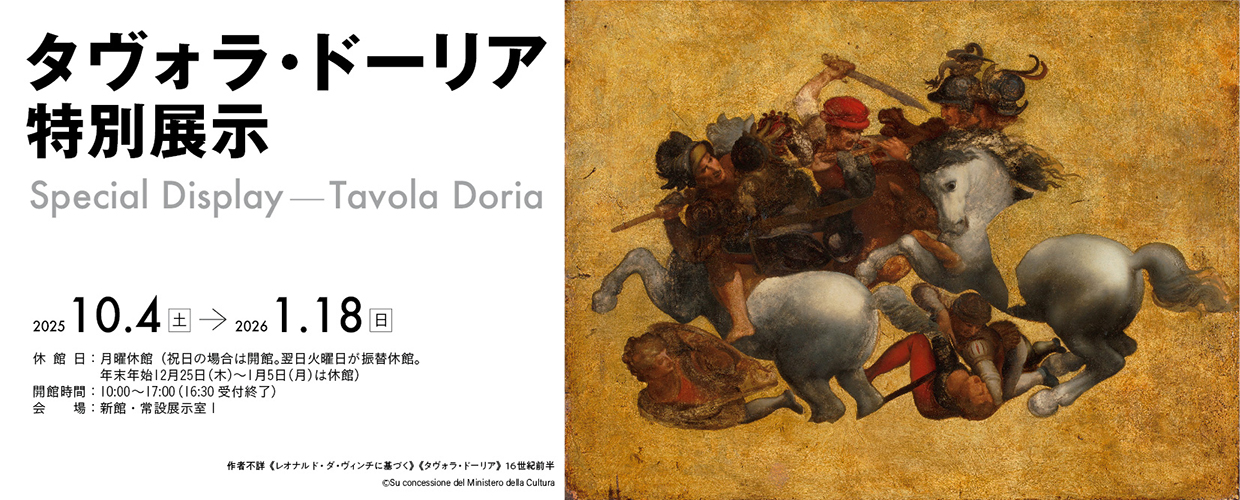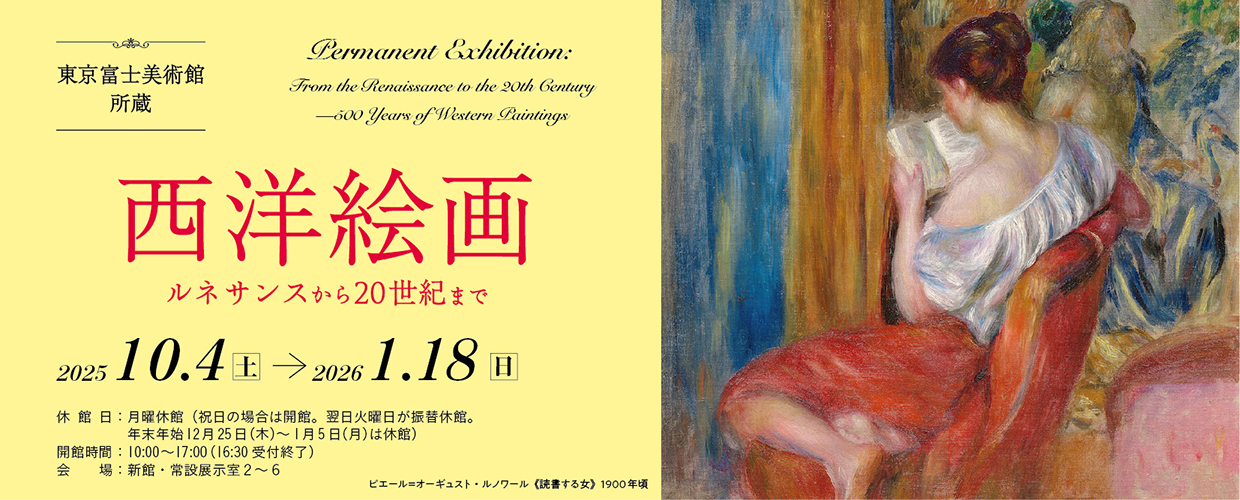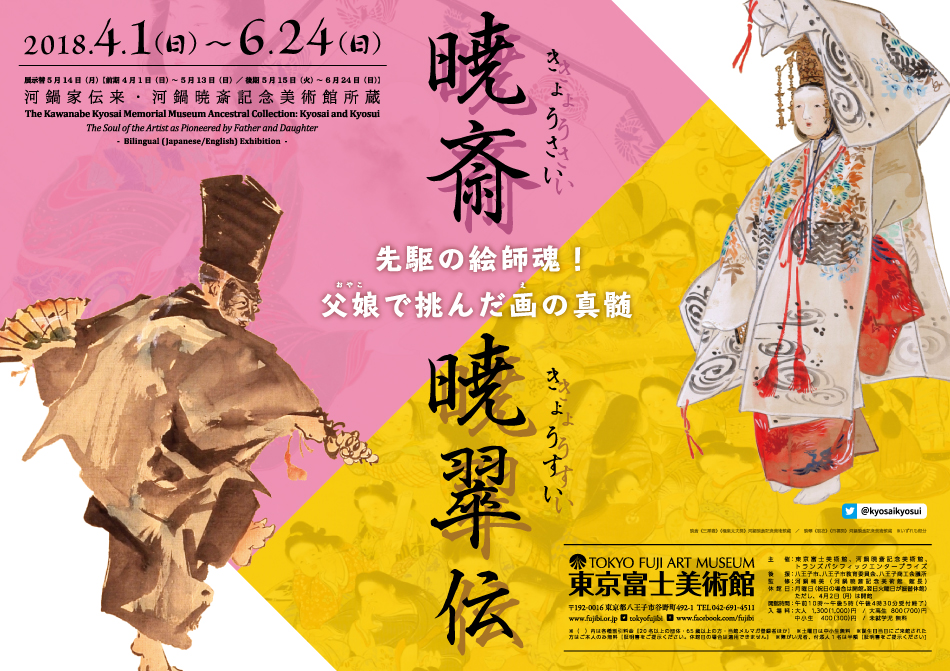

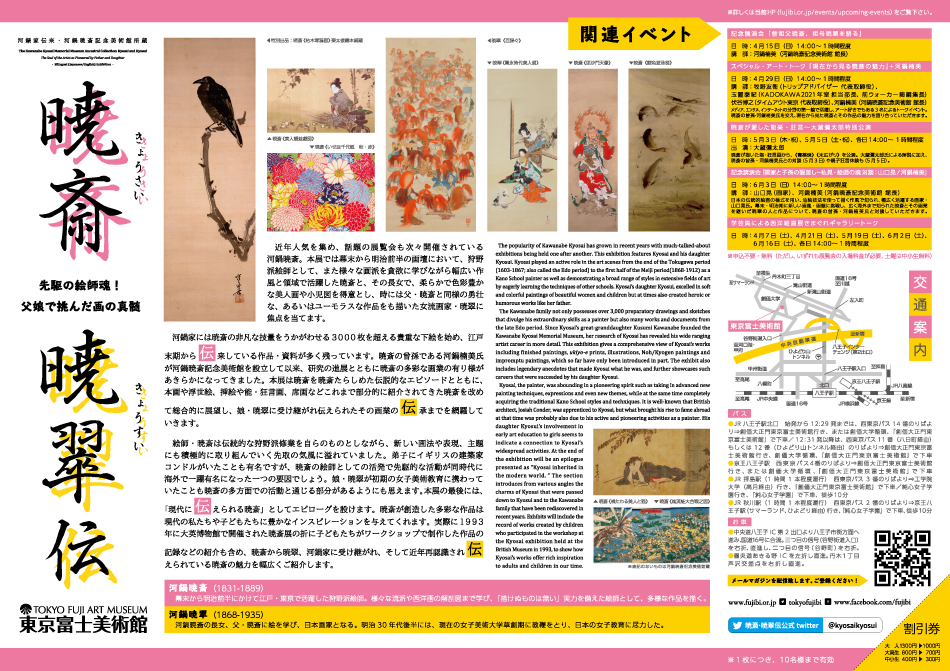
The Kawanabe Kyosai Memorial Museum Ancestral Collection: Kyosai and Kyosui – The Soul of the Artist as Pioneered by Father and Daughter –
Exhibition Period Sunday, April 1 - Sunday, June 24, 2018
Closed : Mondays (except on holidays, then closed on Tuesday)
Open : 10 a.m.-5 p.m. (Reception closes at 4:30 p.m.)
Venue : Special Exhibition Galleries 1-4 in the Main Building of Tokyo Fuji Art Museum
Host : Tokyo Fuji Art Museum, Kawanabe Kyosai Memorial Museum, Transpacific Enterprises
Patronized by : Hachioji City; Hachioji City Board of Education; Hachioji Chamber of Commerce and Industry
OVERVIEW
-Bilingual (Japanese/English) Exhibition- The popularity of Kawanabe Kyosai has grown in recent years with much-talked-about exhibitions being held one after another. This exhibition features Kyosai and his daughter Kyosui. Kyosai played an active role in the art scenes from the end of the Tokugawa period (1603-1867; also called the Edo period) to the first half of the Meiji period (1868-1912) as a Kano School painter as well as demonstrating a broad range of styles in extensive fields of art by eagerly learning the techniques of other schools. Kyosai’s daughter Kyosui, excelled in soft and colorful paintings of beautiful women and children but at times also created heroic or humorous works like her father. The Kawanabe family not only possesses over 3,000 preparatory drawings and sketches that divulge his extraordinary skills as a painter but also many works and documents from the late Edo period. Since Kyosai’s great-granddaughter Kusumi Kawanabe founded the Kawanabe Kyosai Memorial Museum, her research of Kyosai has revealed his wide ranging artist career in more detail. This exhibition gives a comprehensive view of Kyosai’s works including finished paintings, ukiyo-e prints, illustrations, Noh/Kyogen paintings and impromptu paintings, which so far have only been introduced in part. The exhibit also includes legendary anecdotes that made Kyosai what he was, and further showcases such careers that were succeeded by his daughter Kyosui. Kyosai, the painter, was abounding in a pioneering spirit such as taking in advanced new painting techniques, expressions and even new themes, while at the same time completely acquiring the traditional Kano School styles and techniques. It is well-known that British architect, Josiah Conder, was apprenticed to Kyosai, but what brought his rise to fame abroad at that time was probably also due to his active and pioneering activities as a painter. His daughter Kyosui’s involvement in early art education to girls seems to indicate a connection to Kyosai’s widespread activities. At the end of the exhibition will be an epilogue presented as “Kyosai inherited in the modern world.” The section introduces from various angles the charms of Kyosai that were passed down to Kyosui and to the Kawanabe family that have been rediscovered in recent years. Exhibits will include the record of works created by children who participated in the workshop at the Kyosai exhibition held at the British Museum in 1993, to show how Kyosai’s works offer rich inspiration to adults and children in our time.
FEATURED
There are no featured articles.
EVENTS
There are no events scheduled. Please check past events by clicking the [View list] button.
UPCOMING EXHIBITIONS
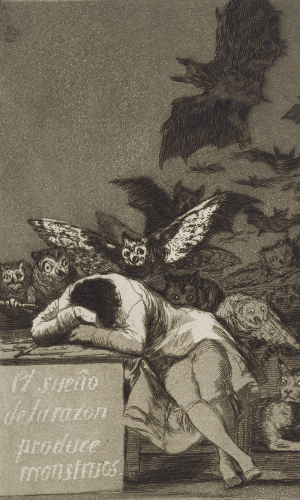 Exhibition of Our Collection
Exhibition of Our Collection The Four Major Print Series of the Spanish Master, Goya
 Other Exhibition
Other Exhibition Exhibitions of Embassies Part IV: Pathways to Cultural Exchange with the World
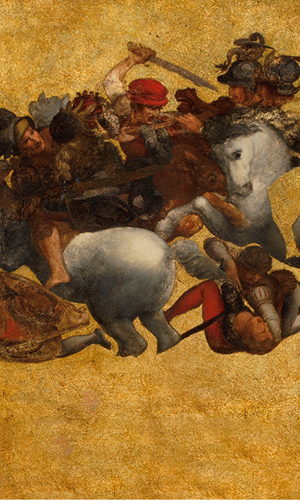 Permanent Exhibition
Permanent Exhibition Special Display—Tavola Doria
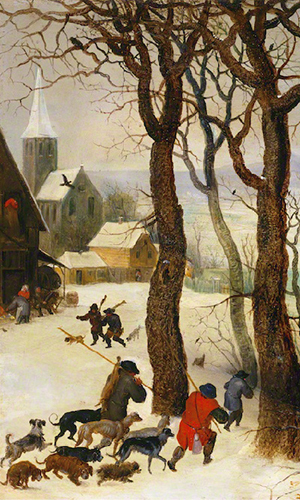 Permanent Exhibition
Permanent Exhibition Permanent Exhibition: From the Renaissance to the 20th Century – 500 Years of Western Paintings
 Special Exhibition
Special Exhibition Commemorating the Donation of the Kanbe Collection The Reviving Spirit of Ukiyo-e: From Meiji Era Kaika-e to Shin-hanga
 Special Exhibition
Special Exhibition This is SUEKI-Ancient Vessels,Timeless Forms-
 Special Exhibition
Special Exhibition Renoir and Japan
